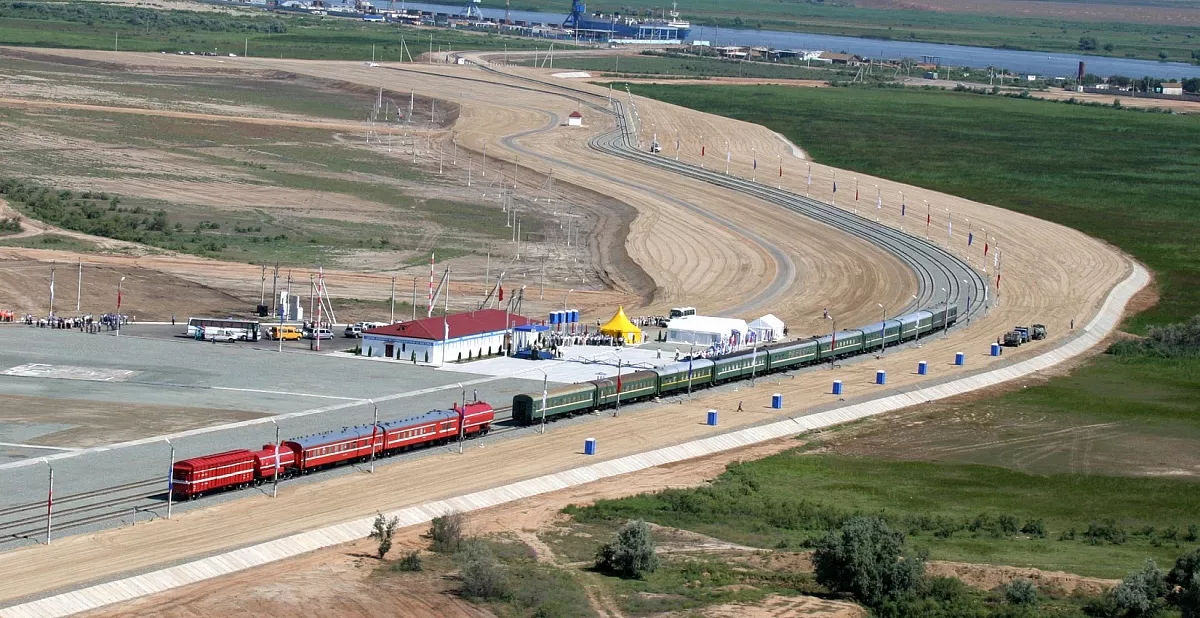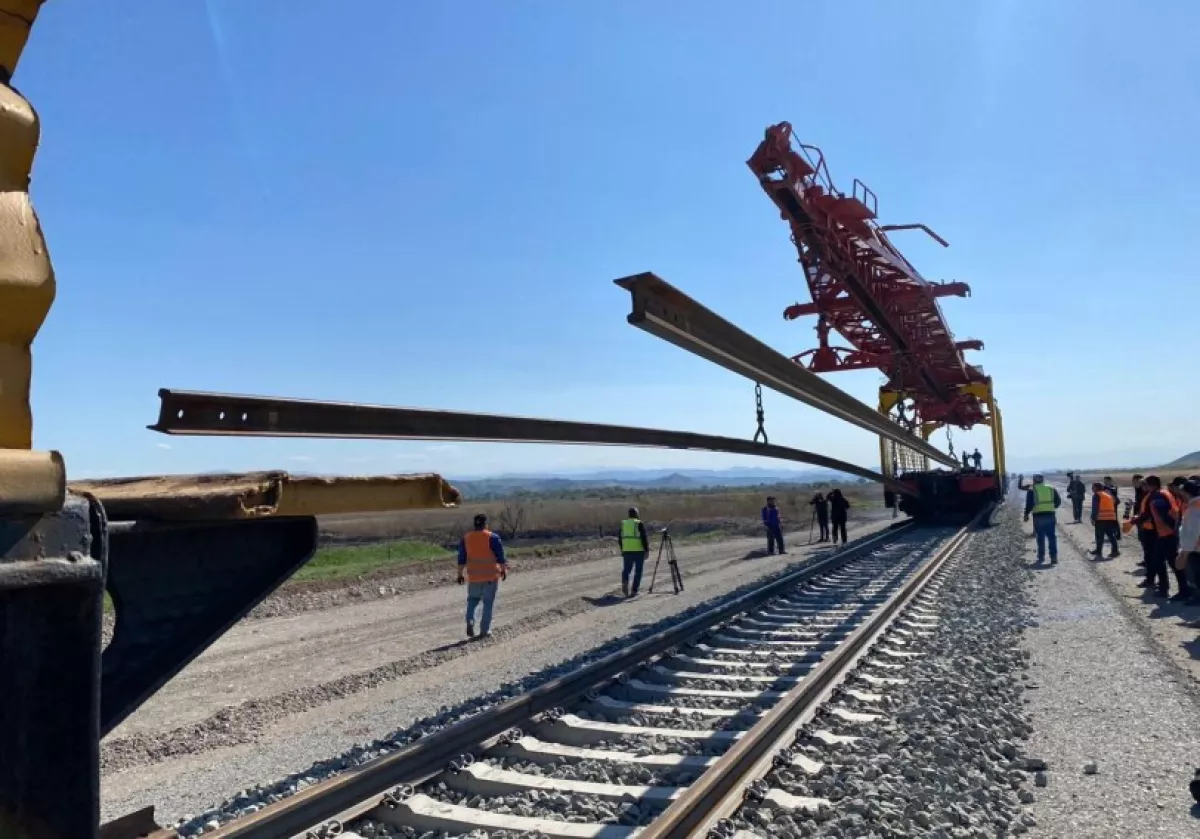From vision to reality: Azerbaijan's central role in North-South Corridor's revival Unlocking new pathways
The development of the western segment of the "North-South" International Transport Corridor (ITC) is now entering a critical phase. In June 2024, transport experts from Russia, Iran, and Azerbaijan agreed to establish a new working group aimed at expanding transit freight traffic. In mid-October, Azerbaijan’s Deputy Prime Minister Shahin Mustafayev and Rovshan Rustamov, Chairman of Azerbaijan Railways, discussed the construction of the Rasht-Astara railway section and the potential for extending the rail network through Iran to connect Azerbaijan's East Zangezur economic region with the Nakhchivan Autonomous Republic.
After decades of negotiations and delays, the North-South ITC project is now close to realisation. On May 17, 2023, Russia and Iran signed an agreement to jointly finance, design, and construct the 170-kilometer Rasht-Astara railway section, valued at an estimated 1.6 billion euros. Russia will contribute 85% of the funding for the project, totalling approximately 1.3 billion euros. Additionally, Russia has committed about 1.5 billion euros to modernize and expand the railway infrastructure for the ITC, addressing bottlenecks both within Iran and on Russian territory.
"Work on the North-South project has accelerated, with Russia, its CIS partners, and Iran driving the initiative," said Russian Prime Minister Mikhail Mishustin during a recent Shanghai Cooperation Organization (SCO) meeting. "This corridor will unlock new opportunities for trade and business, and we are undertaking extensive measures to modernize rail, road, and sea transport infrastructure."

It should be noted that Azerbaijan plays a pivotal role in the North-South project and has a direct stake in the swift implementation of these initiatives. The 7,200-kilometer International Transport Corridor (ITC), which begins at the harbours of St. Petersburg and extends to the Indian port of Mumbai, features three route options. One of these is the Trans-Caspian route, while the other two are land-based. The longer eastern route, spanning 2,500 kilometres, passes through Central Asia toward Iran, while the western route, significantly shorter at 1,450 kilometres, involves road and rail transport through Azerbaijan.
The ongoing progress of ITC components in Iran was a focal point during Azerbaijani Deputy Prime Minister Shahin Mustafayev’s visit to the Islamic Republic of Iran, where he held discussions with Iran’s Minister of Roads and Urban Development, Farzana Sadig. "Construction on the Rasht-Astara railway section, a crucial element in the development of the North-South corridor, has already commenced in Iran," stated Minister Sadig. She emphasized that cooperation with Azerbaijan is vital for enhancing the railway infrastructure of the ITC and called for the development of a plan to achieve the goal of transporting 15 million tons of cargo between the two nations.
It is important to note that Azerbaijan has been highly proactive in developing the potential of the North-South International Transport Corridor (ITC) since 2017. A number of key infrastructure projects have been completed, including the laying of rails from the border town of Astara to the state border, the construction of a railway bridge, and the establishment of new terminals and border checkpoints. Among these developments is the Astara Grain Terminal, the largest in the region, with a capacity to process 500,000 tons of grain annually.
In May this year, Azerbaijan completed the reconstruction of the Astara terminal in the Astara district. According to Azerbaijan Railways, the renovation of the terminal’s freight yard has been successfully completed, and customs control has been organized at the site. Preliminary estimates suggest that the operation of the Astara terminal will boost transit traffic along the North-South corridor by 10-15% by the end of the year. In the long term, the terminal’s transhipment capacity is projected to rise from its current 1 million tons annually to 4 million tons at peak levels, with a shift-based mode of operation.
By 2028, when the Iranian section of the Rasht-Astara railway is expected to be commissioned, Azerbaijan aims to complete all modernization work on its section of the ITC. Currently, Azerbaijan Railways is in the final stages of reconstructing the Baku-Yalama section of the railway, supported by a $400 million loan from the Asian Development Bank (ADB). This project is scheduled to be completed by mid-2025, after which modernization work will commence on the Baku-Astara section of the railway.

There is an alternative vector for the western route of the “North-South” corridor that also passes through Azerbaijan. According to local media reports, specialists from the Russian company "VTB - Project Office" recently presented a project to the Russian government outlining a seamless cargo transportation system from Russia to Iran’s southern ports via Azerbaijan. The project proposes constructing a new railway connecting Imishli in Azerbaijan and Parsabad in Iran, based on the 1520 mm gauge standard. This new railway would enable a direct route from Russia to Iran through Azerbaijan. The plan also includes creating a digital platform, managed by Russian Railways, to oversee international transportation along the entire route. The route's cargo base would focus on transiting goods such as grain, metals, fertilizers, coal, oil, gas chemicals, and containerized goods. Project developers from VTB estimate that if construction begins by the end of next year, the project could be completed by 2031.
Speculating on the future of the Russian project remains challenging, as such ventures are technically complex, highly expensive, and will necessitate a robust legal framework alongside political guarantees from the participating countries in the International Transport Corridor (ITC).
Nonetheless, Azerbaijan continues to independently fund the construction of the Goradiz-Aghband cross-border international railway line. By August this year, approximately 57% of the 110.4-kilometer single-track railway, passing through Jabrayil and Zangilan districts to the border village of Aghband, had been laid. The project includes three tunnels, numerous bridges, nine railway stations, and nearly 500 engineering structures. Despite the mountainous terrain, Turkish contractors are actively involved, using advanced technologies to carry out the construction in three stages, with completion expected by the second half of 2025.
Prospects for the project were discussed during a recent meeting in Iran between Rovshan Rustamov, Chairman of Azerbaijan Railways, and Jabbar Ali Zakeri Sardrudi, Head of the Iranian Railway Administration. Rustamov highlighted their discussions on the direct land connection between Azerbaijan’s East Zangezur economic region and the Nakhchivan Autonomous Republic (NAR) via Iranian territory, as well as the steps taken to develop both routes of the North-South corridor.
It's worth noting that from Aghband, railway lines are planned to extend through Iranian territory via the "Araz corridor." In March 2022, Azerbaijan and Iran signed a Memorandum of Understanding to establish new communication links, including a 55-kilometer railway and a motor road. The agreement also covers the construction of four border bridges over the Araz River, connecting to NAR's transport network. This diversification will open additional routes, offering access to Iranian railways and the Persian Gulf ports, complementing the Middle Corridor leading toward Türkiye.








